The Group of Seven (G-7) countries have recently agreed on a central part of their economic approach to China — “de-risking” — and, just as importantly, “de-risking, not decoupling.” This phrase originated with the European Union, so the agreement seems wide.
“De-coupling” any major country’s economy from China was always impossible and sounds harshly radical, but it’s been a commonly used and divisive word in China policy circles. The word “de-risking” sounds considerably more moderate, makes intuitive sense, and has now produced a highly publicized consensus on China policy among a large variety of different countries.
But in reality, the word “de-risking” is extremely ambiguous and its meaning uncertain. The word itself tells us very little about China policy. Its scope all depends on how the word is interpreted. Very likely, different countries will interpret and apply “de-risking” differently, creating divergence and not consensus — in some countries producing a modest scope of economic separation, in some potentially a policy similar to “de-coupling.”
There are three parts to the massive uncertainty about what “de-risking” means and the likely divergences in its application.
First, what does the “de” in “de-risking” mean? Some leading dictionaries define “de-risking” as “to eliminate risk” or “to remove risk.” Others define it as “reducing the possibility that something bad will happen” or making something “less risky.” The U.S. State Department in a non-China context defines “de-risking” as “to avoid, rather than manage, risk.”
These different definitions would produce very different “de-risking” policies. If you define the de-risking goal with China as “eliminating” the relevant risks, rather than “reducing” them, you will take far more sweeping actions.
The second major uncertainty is what counts as a relevant risk. Even if you define de-risking as reducing rather than eliminating risk, the potential scope of de-risking and the degree of economic separation from China depends on what problems are treated as relevant risks.
The most common risks the U.S. government invokes in discussing economic separations from China are risks to national security. As President Joe Biden recently put it at the G-7 summit, de-risking involves “protecting a narrow set of advanced technologies critical for our national security” — with the greatest focus on “technology that could tilt the military balance.” Protecting “national security” is probably the most important role of national government. It is also a broad and vague concept. The Commerce Department, for example, has explicitly embraced “national security” export controls on China regarding technologies that “improve the speed and accuracy of its military decision making, planning, and logistics.” This would include vast sectors of U.S. manufacturing and exports involving research and communication tools with predominantly civilian uses.
In addition, presidents have historically overused their authority to protect “national security.” (President Donald Trump, for example, invoked “national security” under Section 232 of the Trade Expansion Act to impose preposterous tariffs on steel and aluminum imports from Canada.) A de-risking policy toward China shaped around broadly-framed risks to “national security” could become close to “de-coupling.”
Beyond “national security,” many other problems involving China can be included in a de-risking policy — human rights, for example. The U.S. government has already authorized the use of economic tools such as export controls against China to address “a significant risk” regarding “activities that are contrary to the … [United States’] foreign policy interest of the protection of human rights.”
De-risking is also certain to address a variety of economic risks China poses. The G-7 communiques focus especially on risks to “economic resilience and economic security.” De-risking includes taking whatever economic steps a country deems appropriate to diversify supply chains, reduce excessive dependency on Chinese supply chains, and resist economic coercion. Biden, in the course of personally embracing the “de-risking, not de-coupling” policy, broadened this list of economic risks and explicitly added “countering harmful practices that hurt our workers.” Would any country conclude that China’s economic growth is itself a risk to its own economic strength? (The G-7 leaders’ communique states that “Our policy approaches are not designed to harm China nor do we seek to thwart China’s economic progress and development.” Chinese official media ignore this statement and say that the G-7’s goal is “to suppress and contain China.”)
The third major uncertainty about de-risking is how a particular risk is evaluated and balanced against a country’s other national interests in deciding whether action should be taken against China and what that action should be. Most risks will require complex assessment before deciding whether and what steps of economic separation from China are taken. How likely or how harmful does a particular risk have to be? How do different countries’ decisionmakers strike the balance between some potential risk and what may be substantial benefits to civilians and to various manufacturers and investors? In addition, what economic tools will governments use to address the risks? Diversifying supply chains and export controls are certain. But restricting outbound investments remains a deeply controversial issue over which countries are divided — not only because of investors’ domestic political power, but also because restricting outbound investments to China would involve controversial decisions about which investors are covered by which countries and extremely complex investment reviews.
Agreeing on a shared goal of de-risking is definitely important, and China’s official media are flatly wrong that “de-risking” is the same as “de-coupling.” But no one can say now what policies different countries will implement under the de-risking label. “De-risking” at this point is only a word, and what I’ve said here is all about the difference between “words” and implementing “actions.”
The words governments use certainly matter. And more than ever, words — as contrasted with “actions” — have become central to governance through statements, media briefings, leaks, and, of course, written laws themselves. “De-risking” is a choice of a very ambiguous word. Governments use ambiguous words all the time for multiple reasons — to build consensus, to create wide leeway in interpretation and thus a wide range to make policy, sometimes even to deceive the public and other countries.
But such words must be interpreted and given meaning, and then actions figured out. Until actions replace words, we won’t know what the new “de-risking” policy is. But we can reasonably predict there will, in fact, be sharply divergent “de-risking” policies of different countries — not the consensus we have now.
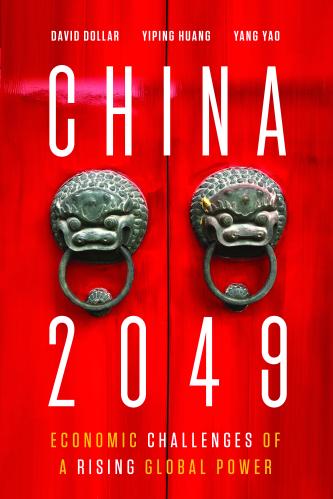
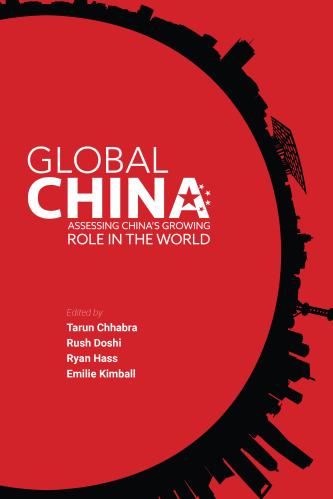
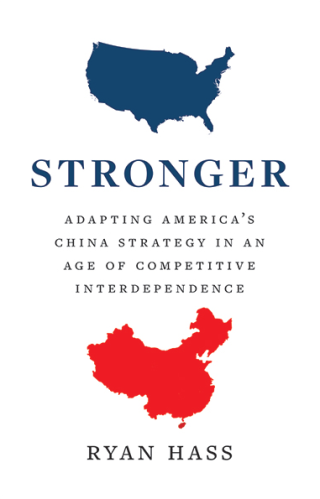
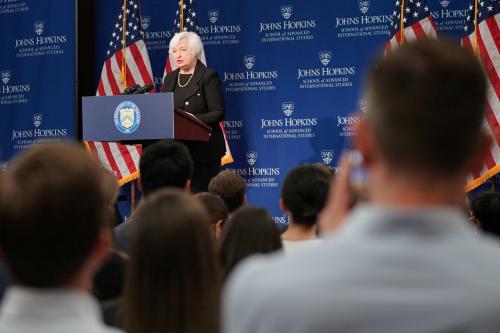
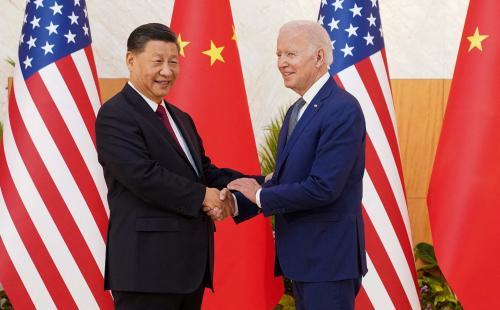
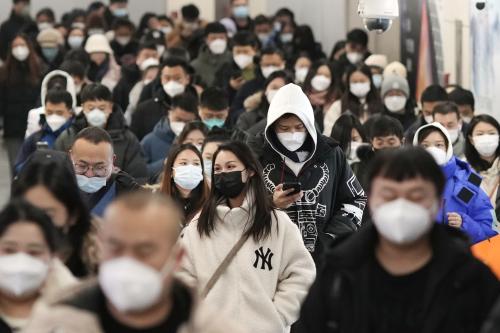


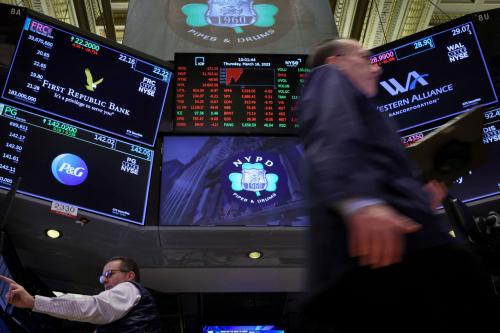
Commentary
Words and policies: “De-risking” and China policy
May 30, 2023